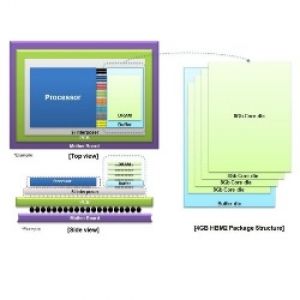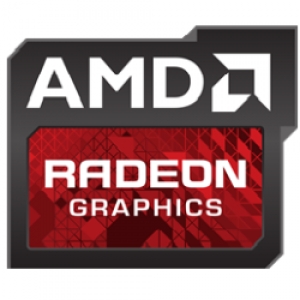From The Blog
-
ConnectWise Slash and Grab Flaw Once Again Shows the Value of Input Validation We talk to Huntress About its Impact
Written by Sean KalinichAlthough the news of the infamous ConnectWise flaw which allowed for the creation of admin accounts is a bit cold, it still is one that…Written on Tuesday, 19 March 2024 12:44 in Security Talk Read 565 times Read more...
-
Social Manipulation as a Service – When the Bots on Twitter get their Check marks
Written by Sean KalinichWhen I started DecryptedTech it was to counter all the crap marketing I saw from component makers. I wanted to prove people with a clean…Written on Monday, 04 March 2024 16:17 in Editorials Read 1472 times Read more...
-
To Release or not to Release a PoC or OST That is the Question
Written by Sean KalinichThere is (and always has been) a debate about the ethics and impact of the release of Proof-of-Concept Exploit for an identified vulnerability and Open-Source…Written on Monday, 26 February 2024 13:05 in Security Talk Read 1027 times Read more...
-
There was an Important Lesson Learned in the LockBit Takedown and it was Not About Threat Groups
Written by Sean KalinichIn what could be called a fantastic move, global law enforcement agencies attacked and took down LockBit’s infrastructure. The day of the event was filled…Written on Thursday, 22 February 2024 12:20 in Security Talk Read 872 times Read more...
-
NetSPI’s Offensive Security Offering Leverages Subject Matter Experts to Enhance Pen Testing
Written by Sean KalinichBlack Hat 2023 Las Vegas. The term offensive security has always been an interesting one for me. On the surface is brings to mind reaching…Written on Tuesday, 12 September 2023 17:05 in Security Talk Read 2057 times Read more...
-
Black Kite Looks to Offer a Better View of Risk in a Rapidly Changing Threat Landscape
Written by Sean KalinichBlack Hat 2023 – Las Vegas. Risk is an interesting subject and has many different meanings to many different people. For the most part Risk…Written on Tuesday, 12 September 2023 14:56 in Security Talk Read 1655 times Read more...
-
Microsoft Finally Reveals how they Believe a Consumer Signing Key was Stollen
Written by Sean KalinichIn May of 2023 a few sensitive accounts reported to Microsoft that their environments appeared to be compromised. Due to the nature of these accounts,…Written on Thursday, 07 September 2023 14:40 in Security Talk Read 2037 times Read more...
-
Mandiant Releases a Detailed Look at the Campaign Targeting Barracuda Email Security Gateways, I Take a Look at What this all Might Mean
Written by Sean KalinichThe recent attack that leveraged a 0-Day vulnerability to compromise a number of Barracuda Email Security Gateway appliances (physical and virtual, but not cloud) was…Written on Wednesday, 30 August 2023 16:09 in Security Talk Read 1941 times Read more...
-
Threat Groups Return to Targeting Developers in Recent Software Supply Chain Attacks
Written by Sean KalinichThere is a topic of conversation that really needs to be talked about in the open. It is the danger of developer systems (personal and…Written on Wednesday, 30 August 2023 13:29 in Security Talk Read 1802 times Read more...
Recent Comments
- Sean, this is a fantastic review of a beautiful game. I do agree with you… Written by Jacob 2023-05-19 14:17:50 Jedi Survivor – The Quick, Dirty, and Limited Spoilers Review
- Great post. Very interesting read but is the reality we are currently facing. Written by JP 2023-05-03 02:33:53 The Dangers of AI; I Think I Have Seen this Movie Before
- I was wondering if you have tested the microphone audio frequency for the Asus HS-1000W? Written by Maciej 2020-12-18 14:09:33 Asus HS-1000W wireless headset impresses us in the lab
- Thanks for review. I appreciate hearing from a real pro as opposed to the blogger… Written by Keith 2019-06-18 04:22:36 The Red Hydrogen One, Possibly One of the Most “misunderstood” Phones Out
- Have yet to see the real impact but in the consumer segment, ryzen series are… Written by sushant 2018-12-23 10:12:12 AMD’s 11-year journey to relevance gets an epic finish.
Most Read
- Microsoft Fail - Start Button Back in Windows 8.1 But No Start Menu Written on Thursday, 30 May 2013 15:33 in News Be the first to comment! Read 116450 times Read more...
- We take a look at the NETGEAR ProSafe WNDAP360 Dual-Band Wireless Access Point Written on Saturday, 07 April 2012 00:17 in Pro Storage and Networking Be the first to comment! Read 87333 times Read more...
- Synology DS1512+ Five-Bay NAS Performance Review Written on Tuesday, 12 June 2012 20:31 in Pro Storage and Networking Be the first to comment! Read 81881 times Read more...
- Gigabyte G1.Sniper M3 Design And Feature Review Written on Sunday, 19 August 2012 22:35 in Enthusiast Motherboards Be the first to comment! Read 80161 times Read more...
- The Asus P8Z77-M Pro Brings Exceptional Performance and Value to the Lab Written on Monday, 23 April 2012 13:02 in Consumer Motherboards Be the first to comment! Read 70836 times Read more...
Displaying items by tag: AMD
Is Virtual Reality really the next IT technology?
It is said that nature abhors a vacuum and that is certainly true. Something will come along to fill the void if we let nature take its course. Unfortunately this law is a little mutated in the consumer electronics market and especially in the PC component world. Here is reads; the market cannot stand not having an “It” technology, so we much create one. It seems that the last few years we have been watching this happen.
The race to HBM2 for the future VR GPU performance crown
On the 19th of January Samsung announced that they had begun mass production of their 4GB HBM 2.0 3D memory. This announcement was the starting gun for the next big GPU race. As we know both AMD and NVIDIA are racing to get viable products to the market in time for Oculus and HTC to launch their consumer version VR headsets. Up until now we have really only seen the developers’ kits and while these have been impressive they are not what most are hoping for in the final product.
AMD earnings call indicates a rough 2016 ahead
AMD as a corporate entity is facing some rough times. As of their last earnings call we saw that they are still losing money and really do not have a product ready to combat this. The Rage Fury line of GPUs is doing ok in terms of sales, but as of this writing AMD has not been able to take a significant amount of market share from NVIDIA or even Intel. This is not to say that Radeon Graphics, or AMD’s APUs are bad products, it is just that they are not performing as well as the competition. In terms of the APU AMD still cannot compete with the compute power of Intel’s Core series even though the GPU side of the APU is a much better product.
AMD talks up VR and the R9 Fury X dual-GPU card at VRLA
AMD says it’s a VR thing now. Well ok, not really, but AMD is leveraging the increased memory bandwidth in their high-end R9 Fury cards to push both 4k and VR. They showed off the R9 Fury X dual-GPU reference design working for the first time at VRLA (Virtual Reality Los Angeles). This card will feature two 28nm Fiji GPUs plus an estimated 8GB of 2.5D HBM 1.0. The memory would be split between the two GPUs at 4GB each.
AMD is delaying the launch of Zen until the end of 2016
AMD is delaying the launch of their new Zen based CPUs until the end of 2016. The news comes on the heels of a rather subdued, if optimistic, earnings report in which Lisa Su, AMD CEO, focused on AMD’s commitment to innovation and highlighted improved R&D spending. It is true that AMD’s operating loss has dropped massively when compared to Q4 2014, but much of this is due to cut backs in operating costs over actual revenue. This is despite claims that AMD’s GPU and Semi-Custom sales were to thank. During 2015 we saw AMD start to pull back from other products (and product lines) to conserve money and focus on creating a compelling product. Zen is the hope for AMD’s future along with moving to a 14nm process.
Rumor says AMD moving to Samsung for 14nm GPUs
Around 2013, AMD entered into an extended partnership with a group of companies to create the Heterogeneous Systems Architecture Foundation. These companies mostly ARM licensees and included Samsung, MediaTek, Texas Instruments (Ti), AMD, Imagination, Qualcomm, and even ARM themselves. The group was similar in nature to the one that AMD had with Motorola and Ti back before the Athlon processor came into existence. The partners were all working on technology and resource sharing to make programing for devices simpler. We also saw it as a chance for AMD to offset R&D costs and potentially enter into some beneficial agreements.
Open Access to the GPU. Is this an open invitation to Malware?
The average GPU is a pretty powerful computational device. The highly parallel design and efficient memory structure means that you can execute operations at a rate that puts most CPUs to shame. With the advent of Cuda and OpenCL the door was opened for developers to push workloads to the GPU and get back some pretty nice returns. Microsoft and many others joined in and began making access to the GPU simpler starting with DirectX 10.
HBM Vs GDDR in 2016 for the GPU crown.
As most people are aware, AMD dropped the first GPUs to utilize HBM (High Bandwidth Memory). These GPUs use a form of HBM called 2.5D which requires the use of an interproser layer than both the memory and the GPU sit on. This is opposed to the 3D stack in which the memory sits on top of the processor that owns it. The traditional stacking of 3D Memory provides significant performance benefits, but would require a different chip for every memory density you plan on releasing. In the GPU world this can be a big problem and is why both AMD and NVIDIA have opted for the 2.5D method.
Radeon Technologies Group trying to recapture the glory of ATi
In September of 2015 (that would be this year) AMD announced that they were splitting off their GPU business into the Radeon Technologies Group (RTG). This move had a number of reasons (most good) and would serve to distance the graphics group from the CPU business. After talking to a few investors they were very optimistic about this move and would consider investing in RTG where they might not have done so in AMD. The split was a long time coming and is actually how AMD should have handled the ATi buy back in 2006 (Merger with separate business units and not a complete buy out).
Asetek targets Giagbyte and AMD in patent dispute with Cooler Master
Asetek is hard at work throwing its legal muscle around and they have rolled AMD and Gigabyte into their efforts. After winning a patent suit against Cooler Master over technology found in the pumps on some of their All in One water coolers. So far the list of infringing products include Gigabyte’s GTX 980 Water Force and AMD’s Fury X. Cooler Master has already been ordered to pay 14.5 % on sales of the Seidon, Nepton and Glacier products, but seems to have decided not to do so.









